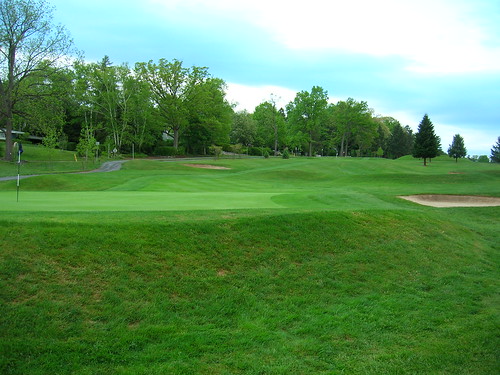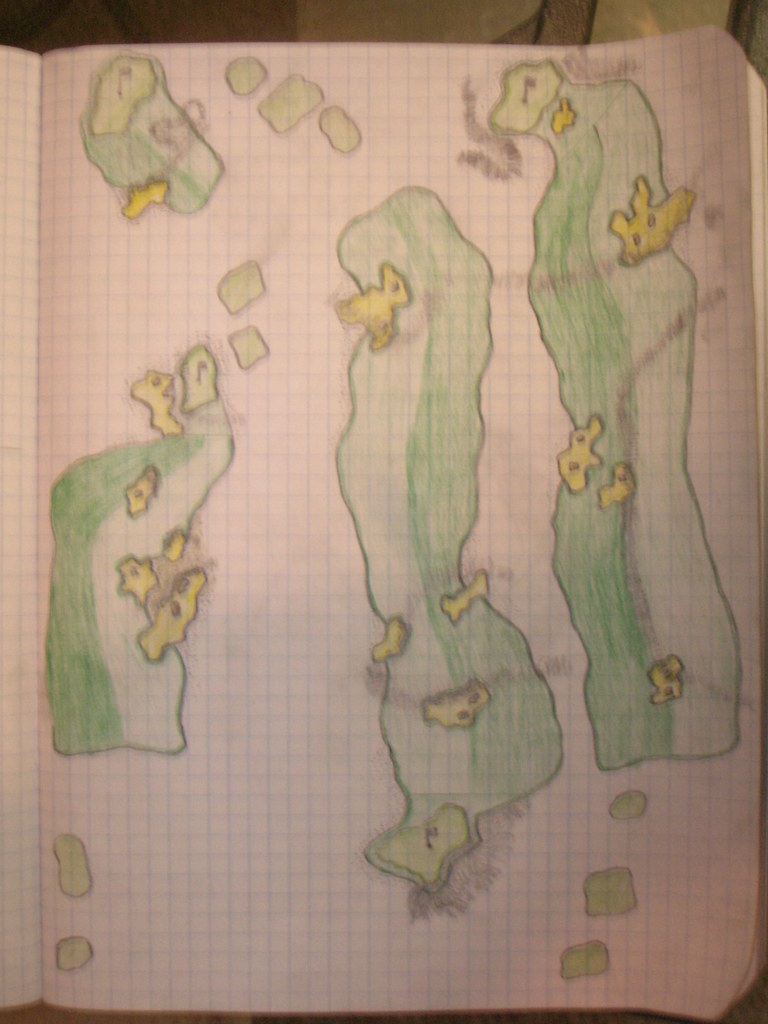Let's take a closer look at the hole.
I envision a hole between 220-240 yards from the back tee with the bunker being 160 yards to carry. I drew a ridge just beyond the bunker with the green below the ridge and the green obscured from the tee. Ideally, the upper portion of the flag is visible. The green should fall away slightly from the tee.
The idea is one of controlling trajectory to best approach the green. The better player is more often able to hit higher shots with longer clubs than players with higher handicaps. This hole affords the opportunity for the higher handicap player to use a shorter club, challenge the bunker and allow the ridge to run the shot on to the green. Meanwhile, the better player is forced to precisely execute a higher trajectory shot or the fall away nature of the green can work against the ball, moving it to a less than desirable position behind the green.
I didn't draw it, but a severe fall off or other form of trouble behind the green would be helpful in furthering this idea.
In practice, one doesn't often encounter such a par 3, but there are a few examples. Kelly Blake Moran has designed two holes such as this: the 3rd at Morgan Hill in Easton, PA and the 5th at Lederach in Harleysville, PA.
Pictured at the left is a view from behind the
 14th green at Penn State's White Course, another example of the idea in practice. This hole is one of the original Willie Park, Jr. holes remaining from 1922. The tee is located at the top of the hill just left of the pine trees. Each "bump" in the hillside are bunkers that appear to sit next to the green from the tee, obscuring the approach from the tee. While the hole plays 190 yards downhill (a mid-iron for better players), attempting to fly the green often proves most difficult as stopping the shot on the green can be tricky given the fall-away design. Missing long makes for a difficult up and down. Simply carrying the bunkers with a low trajectory shot (130yards) provides a much more consistently successful alternative for all calibers of players.
14th green at Penn State's White Course, another example of the idea in practice. This hole is one of the original Willie Park, Jr. holes remaining from 1922. The tee is located at the top of the hill just left of the pine trees. Each "bump" in the hillside are bunkers that appear to sit next to the green from the tee, obscuring the approach from the tee. While the hole plays 190 yards downhill (a mid-iron for better players), attempting to fly the green often proves most difficult as stopping the shot on the green can be tricky given the fall-away design. Missing long makes for a difficult up and down. Simply carrying the bunkers with a low trajectory shot (130yards) provides a much more consistently successful alternative for all calibers of players.Another particularly appealing feature of the idea is that on repeat play, the hole begins to outwit the golfer's mind. Now aware of the possibilities, the golfer may bring the bunkers into play through poor execution.


